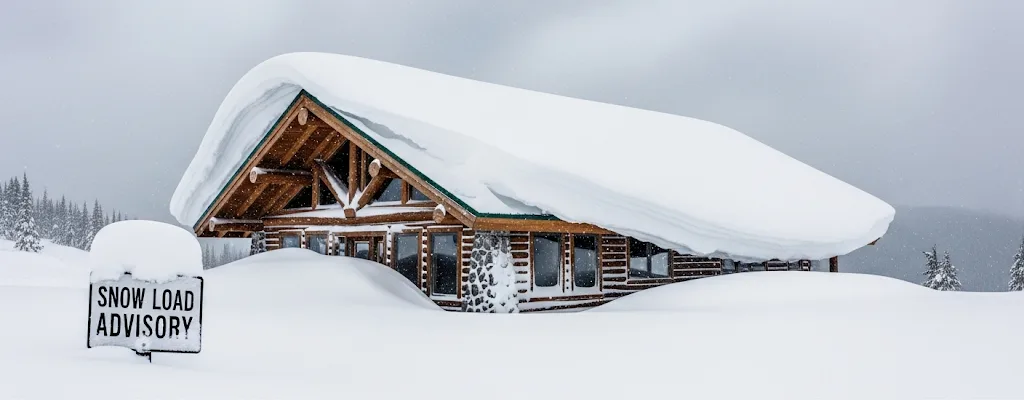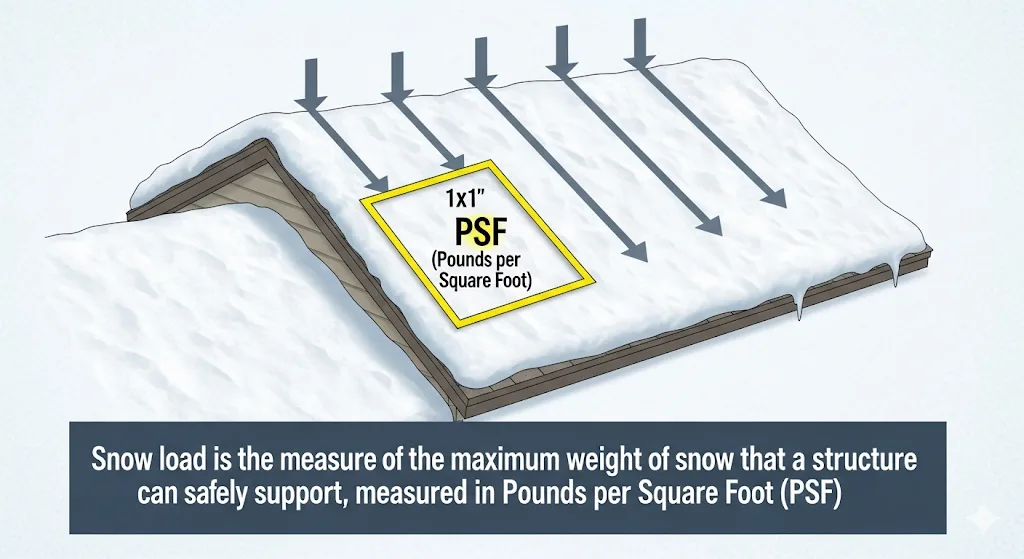Understanding Pergola Snow Load: A Guide to Winter Safety

For a homeowner in North America, a snow-covered backyard can be a breathtaking sight. But as you admire the serene beauty, a nagging question might creep into your mind: “Is my beautiful new pergola going to be okay under all that weight?”
It’s a critical question. Understanding pergola snow load isn’t just about technical specs; it’s about the safety of your family, the protection of your home, and the long-term durability of your investment.
This guide is designed to demystify pergola snow rating for homeowners. We’ll break down what the numbers mean, what to look for in a true 4-season pergola, and how to ensure your outdoor oasis remains a source of joy, not anxiety, through even the harshest winters.
What Exactly is Snow Load? A Simple Guide for Homeowners

Snow load is the measure of the maximum weight of snow that a structure can safely support, measured in Pounds per Square Foot (PSF).
But not all snow is created equal. The key is understanding snow density:
- Light, Fluffy Snow: A foot of this might only weigh 3-5 PSF.
- Wet, Heavy Snow: The same foot of wet, compacted snow can weigh over 20 PSF! It’s like the difference between a pillow and a wet sponge of the same size.
To understand the typical snow load requirements for your specific area, you can reference official resources like the ground snow load maps provided by organizations such as ASCE.
Why Snow Load is a Non-Negotiable Factor for North American Winters
For homeowners in much of the United States and Canada, snow is a certainty. From the heavy lake-effect snows of the Midwest and Northeast to the deep powder of the Rocky Mountains, a pergola’s structural integrity is put to the test every year.

Ignoring the pergola snow load capacity can lead to catastrophic failure, risking:
- Damage to the pergola itself (bending or collapse).
- Damage to your house if the pergola is attached.
- Serious safety hazards for anyone nearby.
A true heavy-duty pergola for snow is not a luxury; it’s a necessity for ensuring decades of safe, worry-free use.
What Determines a Pergola’s Snow Load Capacity?
The weight capacity of a pergola isn’t an arbitrary number. It’s the result of deliberate engineering and material choices. Here’s what to look for:
Material Grade & Thickness:
This is the most critical factor. Standard, thin-walled aluminum or wood simply won’t suffice. Look for high-grade, thick-profile 6063-T5 architectural aluminum. Its inherent strength is the foundation of a high snow load rating. This is a key reason why modern aluminum pergolas are good for snow.
Beam and Post Dimensions:
Larger, deeper, and thicker main beams and support posts can distribute weight more effectively without bending or warping under pressure.
The Fastening System:
The strongest frame is useless if it’s held together by weak hardware. Look for high-grade stainless steel bolts and a robust internal connection system that ensures every joint is a point of strength.
Foundation Integrity:
The entire weight of the structure and the snow on top of it is transferred to the ground. A professionally installed foundation with deep concrete footings is essential to prevent shifting and ensure stability.
How to Read and Understand Snow Load Ratings

When a brand provides a snow load rating, here’s how to interpret it:
- A rating of 20 PSF means each square foot of the roof can support 20 pounds of weight.
- A rating of 30 PSF or higher is considered excellent for most heavy snow regions in North America.
Always ask for the specific PSF rating. A vague claim like “our pergola is strong” is a red flag. A confident manufacturer will provide you with the specific engineering data.
Related Subtopics: Winter Pergola Care & Key Considerations
Beyond the specs, here are some practical considerations for living with your pergola through the winter.
Louvered Roofs in Winter: Open or Closed?
This is a critical question for owners of bioclimatic pergolas. The expert recommendation for heavy snow conditions is to open the louvers to a vertical position. This prevents heavy snow from accumulating on top of the flat surface, allowing it to fall through harmlessly. It’s the smartest way to manage louvered roof maintenance winter.
Do I Need to Manually Remove Snow from My Pergola?
If you have a high-quality pergola rated for your region’s snow load and you’ve opened the louvers, you should rarely need to intervene. However, in the case of extreme, record-breaking blizzards or if you have a solid-roof model, it is a wise precaution to safely clear excessive accumulation. Never use metal shovels or sharp objects that could damage the finish. A soft-bristled broom is the best tool.
What Defines a True “4-Season Pergola”?
A true 4-season pergola is a system where every component is designed to withstand the elements year-round. It must have:
- A high snow load rating (e.g., 30+ PSF).
- A high wind resistance rating.
- A durable, corrosion-resistant frame (like 6063-T5 aluminum alloy).
- A high-performance finish that resists fading and chipping.
- An integrated gutter system to manage meltwater and prevent ice dams.
Conclusione
Choosing a pergola for a North American home requires looking beyond aesthetics. The pergola snow load is a fundamental specification that speaks directly to the quality, safety, and long-term durability of the structure.
By understanding what snow load ratings mean and what design elements to look for, you are empowered to ask the right questions and invest in a pergola that will provide a safe and beautiful outdoor sanctuary for many winters to come.
Domande frequenti (FAQ)
Q1: How much snow can a typical aluminum pergola hold?
There is no “typical” number, as it depends entirely on the engineering and material thickness. Low-quality, big-box store models may have a rating as low as 10-15 PSF, which is insufficient for many climates. High-performance, heavy-duty pergolas can have ratings of 30 PSF or even higher. Always ask for the specific rating.
Q2: What is a good PSF rating for a pergola in a heavy snow area like Colorado or the Northeast?
For regions known for heavy and wet snow, you should look for a pergola with a snow load rating of at least 25 PSF, with 30 PSF or more being ideal for maximum peace of mind.
Q3: Will adding an integrated heater help melt the snow on the roof?
No. Integrated infrared heaters are designed to warm the people and objects under the pergola, not the roof itself. They will not have a significant impact on melting snow accumulation on top of the louvers.
Q4: Does a typical warranty cover damage from snow collapse?
This varies greatly by brand and is a crucial question to ask. A reliable manufacturer whose product is rated for a specific snow load will typically warranty it against failure up to that load, provided it was installed correctly. However, damage from “acts of God” (like a record-breaking blizzard that exceeds the rating) or improper maintenance (like leaving the louvers closed) may be excluded.
Always read the warranty fine print.



